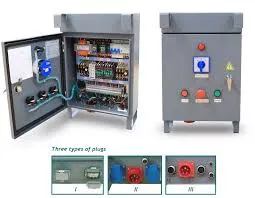Automotive Wiring Harness Tape Essential for Vehicle Performance
The automotive industry is one of the fastest-growing sectors globally, with innovations steering the development of safer, more efficient, and technologically advanced vehicles. Among the many components that make up today’s vehicles, wiring harnesses play a critical role. They are responsible for transmitting power and signals throughout the vehicle, ensuring that various electrical systems function seamlessly. However, to optimize their performance and durability, the use of high-quality auto wiring harness tape is essential.
Understanding Automotive Wiring Harnesses
Before delving into the importance of wiring harness tape, it’s crucial to understand what a wiring harness is. Essentially, a wiring harness is a collection of wires, connectors, and terminals that form a comprehensive electrical system in a vehicle. It connects various components like the battery, sensors, and control units to enable communication and power transmission. Given the harsh conditions vehicles face—from extreme temperatures to vibrations and exposure to moisture—the integrity of the wiring harness is paramount.
The Role of Wiring Harness Tape
Automotive wiring harness tape serves multiple purposes, making it a vital component in the construction and maintenance of wiring systems. Primarily, it’s used to bundle and secure wires together, reducing the chance of tangling and wear. With proper insulation, these tapes prevent electrical shorts, protecting critical components from damage.
1. Insulation and Protection The electrical wires exposed to elements in the engine compartment are at risk of wear and tear. Automotive wiring harness tape is designed to provide insulation, safeguarding wires from moisture, dust, and other contaminants. This protective barrier is vital, especially in more rugged applications.
2. Vibration Dampening Vehicles are subject to significant vibrations while in motion. These vibrations can cause wires to rub against each other or against metal surfaces, leading to wear, fraying, or even breakage. Quality wiring harness tape helps absorb and dampen these vibrations, reducing the risk of damage over time.
automotive wiring harness tape

3. Organization A well-organized wiring harness not only makes the installation easier but also enhances troubleshooting and maintenance processes. The application of wiring harness tape keeps wires neatly bundled together, making it easier to identify and address issues if they arise.
4. Temperature Resistance Wiring harness tape is designed to withstand high temperatures that are common in engine compartments. This temperature resistance ensures that the tape remains intact, providing ongoing protection to the wires beneath.
5. Variety of Options The market offers various types of automotive wiring harness tape, including cloth tape, vinyl tape, and specialized heat-shrinkable tape. Each type serves specific applications, allowing automotive manufacturers and repair professionals to select the best fit for their needs.
Advancements in Tape Technology
The automotive industry continually evolves, leading to innovations in materials and technologies. The latest developments in wiring harness tape include the incorporation of flame-resistant properties and improved adhesive backing, providing added safety and longevity. These advancements ensure that today’s vehicles can meet stringent regulatory standards while also being reliable and efficient.
Conclusion
In conclusion, automotive wiring harness tape is a crucial component in the automotive industry, enhancing the performance, safety, and reliability of vehicles. It not only facilitates the organization and protection of wiring systems but also plays an essential role in mitigating the effects of environmental factors and mechanical stresses. As vehicles become more advanced and the electrification of automotive systems accelerates, the importance of high-quality wiring harness tape cannot be overstated. Investing in quality tape ensures that wiring harnesses function optimally, contributing to a vehicle's overall performance and longevity. For manufacturers and automotive technicians, understanding the significance of this seemingly small component can lead to better products and enhanced vehicle safety for consumers worldwide.
-
XIANGFAN Rubber Tape-Ultimate Solutions for All Your Insulation NeedsNewsJun.24,2025
-
XIANGFAN Rubber Tape-Protection for Industrial and Residential ApplicationsNewsJun.24,2025
-
XIANGFAN Rubber Tape: Superior Safety and Sealing for Demanding EnvironmentsNewsJun.24,2025
-
XIANGFAN Rubber Tape: Reliable Solutions for Every Electrical ChallengeNewsJun.24,2025
-
XIANGFAN Electrical & Industrial Tape: Powering Reliability Across IndustriesNewsJun.24,2025
-
XIANGFAN Electrical & Industrial Tape: Excellence in Every ApplicationNewsJun.24,2025
